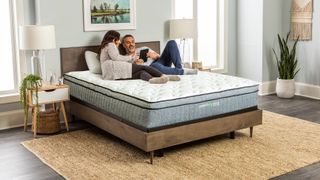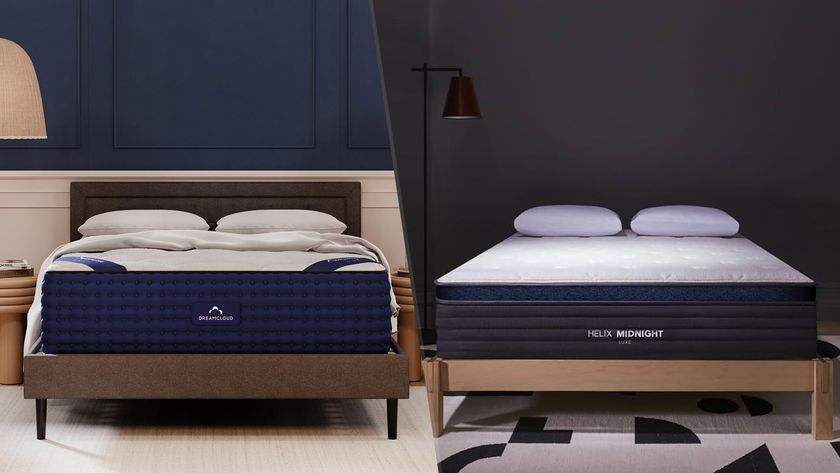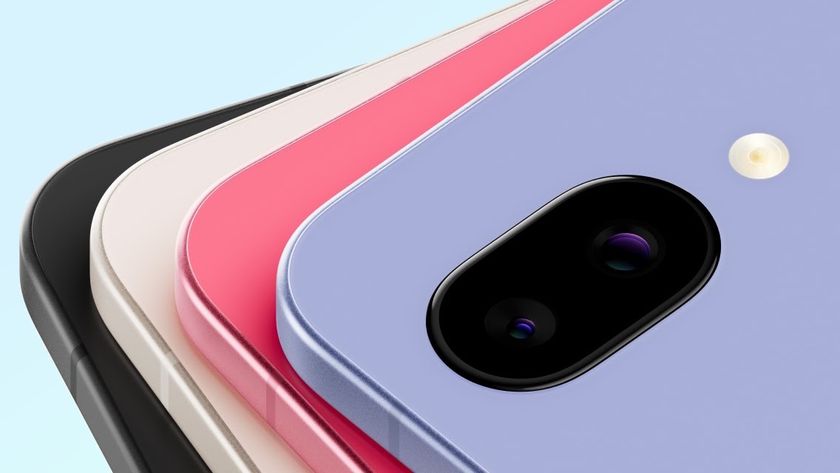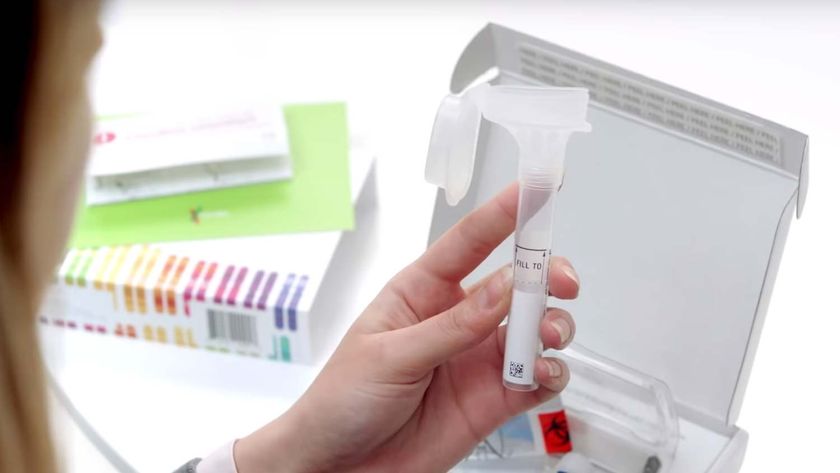Casper vs GhostBed: which hybrid mattress is right for you?
It’s Casper vs GhostBed in our hybrid mattress head to head

When it comes to specialist sleep brands, chances are you have heard of Casper and GhostBed. Both manufacturers make some of the world’s best mattresses for a range of sleepers, and they each excel at hybrid models (mattresses made with a mix of foam and coils). In our Casper vs GhostBed head to head, we’re focusing on each brand’s most popular hybrid picks: the Casper Original Hybrid (from $995) and the GhostBed Flex Luxury Hybrid (from $1,187).
Here we look at how each compares in terms of price, support and comfort. We’ll also look at design features, what kind of sleeper the Casper and the GhostBed would suit, plus any additional benefits offered so that you can decide which hybrid will give you the perfect night’s sleep.
Hybrids marry springy coils with supportive foam to offer pressure relief, support and bounce, but if you prefer the cozy feel of foam, check out our guide to the best memory foam mattresses instead.
Casper vs GhostBed: At a glance
Who should choose Casper?
- Those with a smaller budget
- Back and combination sleepers
- Those looking for zoned support
Who should choose GhostBed?
- Those who sleep hot
- Couples who want a bed without a lot of motion transfer
- Back and combination sleepers
Casper features in our guide to the best mattress in a box as it offers a good range of hybrids at reasonable prices. Yes it makes some luxurious and higher priced cooling models too, but the Original Hybrid is extremely competitively priced and considerably cheaper than GhostBed’s Flex. So, if you have a smaller budget, the Casper is going to be the more affordable option of the two.
Both brands make hybrids in sizes twin through to Cal king, and GhostBed also makes a split Cal king for co-sleepers who have different mattress firmness needs. The Black Friday mattress deals are one of the best ways to get a great mattress for less, but both Casper and GhostBed run regular sales throughout the year, so there's always a way to lower the price.

Casper vs GhostBed: at a glance
Casper Original Hybrid
- Price range: $995 to $1,795
- Type: Bed in a box
- Firmness: Medium Firm
- Sleep trial: 100 nights
- Warranty: 10-year limited warranty
- Standout features: Zoned support, premium foam, good cooling
- Materials: Memory foam, polyurethane foam, polyester, steel, support foam
- Depth: 11”
- Sizes: Twin, Twin XL, Full, Queen, King, Cal King
GhostBed Flex Luxury Hybrid
- Price range: $1,695 to $3,700
- Type: Bed in a box
- Firmness: Medium Firm
- Sleep trial: 101 nights
- Warranty: 25-year warranty
- Standout features: Low motion transfer, superior cooling, plush materials
- Materials: Gel memory foam, steel, transition foam, support foam
- Depth: 13”
- Sizes: Twin, Twin XL, Full, Queen, King, Cal King, Split King
Casper mattress: Save up to 50% on hybrids
Casper regularly offers discounts on its popular Hybrid mattress range, but the biggest savings are always found on the older hybrid models, with savings of up to 50%. You'll rarely get free gifts plus money off with Casper, making GhostBed the better of the two if you want to score free bedding too.
GhostBed mattress: Save 30% and get two free pillows
GhostBed is currently offering a 30% discount on its popular hybrid models, with the Flex Luxury Hybrid mattress now priced between $1,187 and $2,590. You also get two free pillows, boosting your value for money further.
Casper vs GhostBed: Prices, trial, shipping
GhostBed just edges the Casper trial period by offering 101 nights as opposed to Casper’s 100 nights. But both manufacturers give you plenty of time to try out your new mattress, and it’s easy to return if you change your mind during the trial period. However, GhostBed offers a far longer warranty than the Casper at 25 years compared to 10.
There’s also the option with both companies to pay a little extra and have your new mattress set up in the room of your choice, whilst your old mattress is taken away and disposed of safely. Casper’s service costs $149 whilst GhostBed’s costs $199.

When comparing Casper vs GhostBed price-wise there’s quite a difference when the mattresses are full price. Casper’s twin, for example, costs $995 to GhostBed’s $1,695. But both companies often run impressive sales. For the latest savings, see our guide to the best Casper mattress sales and deals, as well as our round-up of the best GhostBed mattress sales and discounts.
Winner: If you can buy the GhostBed whilst it’s on offer, then its 25-year warranty just edges it past the Casper. But we’re going to declare the Casper the overall winner here – lower prices all round and a decent trial and warranty period make it an attractive choice.
Casper vs GhostBed: Build and materials
The Casper Original Hybrid features a cover made from a knit polyester blend, providing a soft and stretchy finish. Then there’s a comfort layer, which is an aerated layer of perforated, breathable foam to increase airflow that also has a slow response to pressure. This gives a little pressure relief at the shoulders and hips.
The transition layer is a zoned support layer of memory foam. This section is divided into three different zones of differing firmness. Softer foam at the shoulders provides pressure relief, whilst firmer foam at the hips gives lift – all of which helps to keep the spine in an even line.
The support layer houses pocketed coils wrapped in a layer of high-density poly foam edge support to maximize the usable surface of the bed. The coils keep sleepers lifted and supported. Finally, the base layer houses high-density poly foam that provides support for the entire mattress.

The GhostBed Flex Luxury Hybrid has a quilted cover containing gel memory foam for immediate pressure relief and cooling fibers to draw body heat away from sleepers (see our best cooling mattress guide for more on this type of material technology). Next up is a comfort layer of gel memory foam that helps reduce motion transfer and provides more body-contouring support.
GhostBed’s latex-like layer of transition foam is bouncy and cooling, helping to lift sleepers and prevent them becoming too sunken in the mattress. After that comes a layer of pocketed coils, wrapped in a layer of high-density poly foam edge support to maximize the usable surface of the bed.
The coils keep sleepers lifted and supported. Finally the base layer is made of high-density poly foam that provides support for the entire mattress.
Winner: You’re going to feel comfy on both these, but the GhostBed just edges it for us due to its extra layer of latex-like transition foam, which gives the mattress a bouncy and responsive feel.
Casper vs GhostBed: Support and Comfort
Casper’s Original Hybrid mattress contains ergonomic zones, designed to deliver varying levels of support to different areas of the body. This means that the Casper is particularly good at keeping your spine aligned, making it a great choice for people who suffer with back pain.
We think the Casper particularly suits back and combination sleepers. Dedicated side sleepers might find the mattress a little firm. Lighter weight stomach sleepers will also find the Casper supportive.
The hybrid combination of foam and coils means that sleepers will never feel too sunken in the mattress, although heavier sleepers of over 250lbs will find that they do sink too low in this mattress for it to be comfortable. The clever aerated comfort layer helps to keep sleepers cool and overall the mattress provides plenty of plushness.

GhostBed’s Flex Luxury Hybrid is the best choice if you sleep particularly hot. Cooling fibers in the cover combined with gel memory foam make this a cool mattress from dawn to dusk. The latex-like layer of transition foam keeps this mattress bouncy and receptive but it’s also surprisingly good at isolating motion. If you’re a light sleeper with a partner, this is a great choice.
Like the Casper, the GhostBed is particularly suited to back and combination sleepers. Stomach sleepers will probably find the mattress too soft, but side sleepers may find the mattress keeps their spine well aligned, unless they suffer particularly badly with hip or shoulder pain. Back and combination sleepers who suffer with back, hip or shoulder pain should find that the GhostBed keeps them well supported and prevents further pain.
Any new mattress takes a while to bed in, so we’d recommend considering one of the best mattress toppers to boost your comfort during those early weeks and months. To keep things fresh, choose a good mattress protector to keep dust, stains and bacteria at bay.
Winner: It’s a draw for us in this department, with both Casper and GhostBed offering excellent support and comfort. We think the GhostBed just edges things for couples sharing a bed, but the Casper is particularly good for those suffering from back pain.
Casper vs GhostBed: Customer ratings
Casper beats GhostBed hands down for sheer numbers in this category, with over 20,000 reviews of its Original mattress. However, this does include reviews of the older model, so you need to get that in perspective. With an average rating of 4.5 out of 5 stars generated by its user reviews, the Casper mattress is frequently praised for its soft and comfortable feel.
Customers repeatedly comment on how they, “don’t want to get out of bed”. There’s also high praise for the hybrid’s ability to reduce back pain. Of course, not everyone likes the Casper and there are a few grumblings about late deliveries.

The GhostBed has far fewer reviews at around 600 (at time of publication), with a higher average rating of 4.8 out 5 stars. Customers love the fact that the mattress keeps them cool and many talk about how it “hits the sweet spot between firm and soft”. A few reviewers found the mattress a little too firm, but reviews are generally overwhelmingly positive.
Winner: Even though it has far fewer reviews, the GhostBed is consistently praised and we declare it the winner here. The company also responds to quite a few of the reviews, which is a good indication that they are involved and listening to customer feedback.
Casper vs GhostBed: Which should you choose?
We’d say that most back and combination sleepers would be happy with either hybrid mattress, but other factors will determine which brand will suit you best. If you’re on a budget, the Casper is the obvious choice – its king size mattress is only marginally more expensive than GhostBed’s twin.
The zoned support of the Casper is also particularly good at keeping the spine aligned and we think it just edges the GhostBed for those who suffer with back pain – actually improving pain as opposed to just not making it any worse. Despite its lower price tag, the mattress feels plush and supportive and the aerated comfort layer stops sleepers from overheating.
However, if you are prone to sleeping hot the GhostBed is in a class of its own for cooling properties. It’s also got a lovely bouncy feel to it with the combination of gel memory foam and latex-like comfort layer.
But, as we previously mentioned, the GhostBed is astonishingly good at preventing motion transfer. It’s a superb choice if you share with a partner, particularly if you’re a light sleeper. Although the GhostBed won’t necessarily improve pain, it certainly doesn’t aggravate back, shoulder or hip pain and it also feels very supportive and full of quality materials.
The one downside across both mattresses is that they really don’t offer enough support for heavier sleepers of over 250lbs, but both models will make a big difference to your comfort levels during sleep if you weigh less than that.
Read more:
- Our guide to the best Saatva mattress sales and deals
- Drift off on the best pillows for sleeping
- Our guide to the best Tempur-Pedic mattress sales
- Go organic with the biggest Avocado Green mattress deals
- Saatva Classic Mattress review: hotel luxury for less
- Casper Wave Hybrid Snow mattress review: cooler sleep is here
Sign up to get the BEST of Tom's Guide direct to your inbox.
Get instant access to breaking news, the hottest reviews, great deals and helpful tips.

Jo Plumridge is an experienced mattress reviewer with several years' experience covering all things mattresses and sleep, and who tests memory foam, hybrid and organic mattresses. What Jo doesn't know about a boxed mattress isn't worth knowing, so naturally we tasked her with producing a series of features for Tom's Guide looking at all aspects of mattresses, from how to pick between latex and memory foam (it's a tricky one), to the seven mistakes people make when buying a mattress for the first time. When testing the DreamCloud Luxury Hybrid for Tom's Guide, Jo said: "I loved the back support and pressure relief it offered. Plus, it looks far more expensive than it is." When she isn’t writing about sleep, Jo also writes extensively on interior design, home products and photography.
























